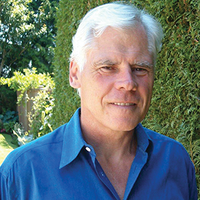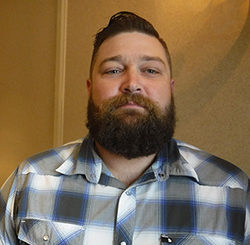 As the title suggests, “Be Happy”. Let’s float around in complete bliss—the seasons follow one another, the sun will rise in the east, and the Earth is rotating. Perfect! From a mechanical insulation industry perspective all is well there, too. The NECB-2015 established greater minimum insulation thicknesses and clarified certain installation procedures (as did ASHRAE 90.1-2010). NECB-2015 also cites TIAC’s “Best Practices Guide”. From here, the provinces and territories can adopt NECB-2015 as written or take from it the features that best suit a jurisdiction’s interests.
As the title suggests, “Be Happy”. Let’s float around in complete bliss—the seasons follow one another, the sun will rise in the east, and the Earth is rotating. Perfect! From a mechanical insulation industry perspective all is well there, too. The NECB-2015 established greater minimum insulation thicknesses and clarified certain installation procedures (as did ASHRAE 90.1-2010). NECB-2015 also cites TIAC’s “Best Practices Guide”. From here, the provinces and territories can adopt NECB-2015 as written or take from it the features that best suit a jurisdiction’s interests.
The manufacturers can continue to pump out whatever it is they produce, the distributors can continue to distribute, and contractors can look forward to more bids and more work. Perfect! But, is it? There is “stuff” lurking in the background that in my view is actually preventing our trade from firing on all cylinders.
Let’s take a moment and go back to NECB-2015, keeping in mind the greater minimum insulation thicknesses and the stated requirement that the specified thickness be the installed thickness. We have the National Building Code of Canada (NBC), the National Plumbing Code of Canada (NPC), and, of course, NECB. The way the codes are organized is that no statement in one code should contradict the intent of another code. The codes are supposed to complement one another in areas where they might overlap.
For example: the NBC concerns itself with fire and safety. The maximum surface temperature in that code is stated to be 70 degrees C (158°F). We have access to an ASTM Standard that proves the maximum surface temperature in the NBC is too high and will cause burns upon skin contact. The maximum surface temperature should in fact be 40 degrees C (104°F).
The NPC has four major criteria that govern how piping systems are designed and installed, and these are:
• Safety
• Health
• Protection of buildings and facilities from water and sewage damage
• Environment
Take Safety and Health, for example. The NBC has to complement this requirement and not work against it. We requested the NBC wording reflect the lower maximum surface temperature. I am pleased to advise, this is in the works for the next edition of the NBC.
When we consider, “Protection of buildings and facilities from water and sewage damage” and “Environment” in the NPC, let’s isolate “protection,” “water,” and “damage”. Combine those and think about the effects of condensation—damage to surrounding areas, the possibility of mould growth, and the potential for slip hazards. When we look at “Environment,” let’s consider that in the context of wasted energy and wasted water. Now, bring all of these to the real world of the job site, and this is why we cannot sit back and rest on our laurels.
The NPC doesn’t stipulate a direct connection between piping design and the subsequent layout of these systems on any given project. By not stating “shall” in connection with mechanical insulation, the NPC tacitly permits installations that in too many instances prevent the installation of the required pipe and duct insulation thicknesses. In other words, the NPC doesn’t state that proper clearance is mandated to accommodate the specified insulation thickness. The NPC doesn’t state that valve shut-off handles be mounted high enough to allow the pipe insulation to continue unimpeded along the pipe run. There are numerous other instances that contractors come across on a regular basis.
If something isn’t disallowed, then it must be allowed; that is the thinking. It has become evident mechanical engineers and mechanical contractors as well as plumbers have overlooked the impact of greater insulation thicknesses on how they approach the design, layout, and installation of plumbing systems. It is also evident the NPC has, by omission, permitted convenience and tradition to impact on the four NPC guiding criteria.
We, as TIAC, can’t necessarily expect other disciplines and trades to do what’s right. It’s up to us to advocate for ourselves. So, where do we start? As a first step, we have the challenge of requesting the NPC clarify that this code is in synch with NECB. If we can do that, the legal requirement becomes the baseline. We have submitted our recommendation to NPC with the rationale and wording that reads:
“The design, configuration, and installation of piping systems and related fittings and supports shall comply with the intent of NECB-2015, Sections 5.2.2.5.8), 5.2.5.3., 5.2.5.3.8) and 5.2.5.4.1).”
Keep in mind going the code route takes time – several years, in fact – before any new requirements enter mainstream thinking.
It is now that we have to take the message to mechanical engineers as well as the trades in question. To do this we have to obtain buy-in from each of the TIAC sectors. Every TIAC member has to expand their messaging to include the approach to installing piping systems and the insulation that goes with the piping.
I’m a firm believer of always bringing something to the table. At a meeting with a mechanical engineer, this is a perfect entry point. Sure, talk about your products, but also bring up where you can help. Familiarize yourself with the new NECB-2015 and ASHRAE 90.1-2010 requirements, and be sure to talk about these at your meetings. Can we enlist the assistance of the International and other trades? After all, they, too, have a vested interest in what we are advocating in this article. If we don’t participate, then “same-old, same-old” will prevail and we’ll be left, still, with complaining among ourselves about job site issues.
We’re here to help. Get in touch.



